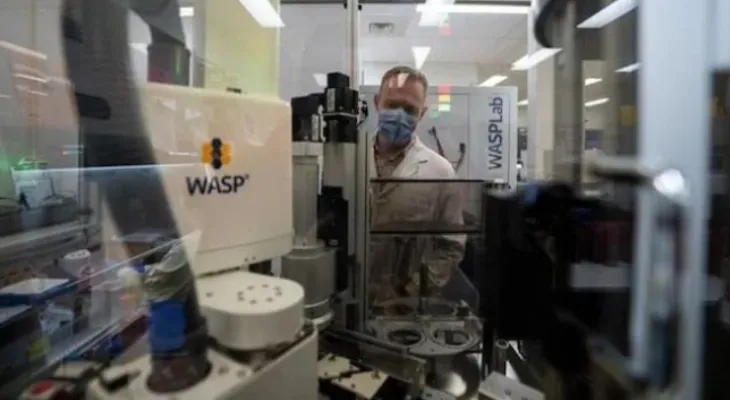Search here
Newspaper
Search here

Arab Canada News
News

Published: January 29, 2024
The two robots, named Tarzan and Jean, unpacked the sample tubes and spread them on bacterial culture plates in the new automated sample processing laboratory, which cost one million dollars and is called WASPLab.
This laboratory is capable of processing up to 70% of the hospital's microbiological samples.
It is not a glamorous job, but it is somewhat tedious, yet necessary, as Saint Paul Laboratory processes more than 145,000 microbiological samples annually from British Columbia and Yukon Territory.
Laboratory automation in Canada is not new, but Saint Paul Hospital says that using artificial intelligence to guide the work of WASPLab is the first of its kind in Western Canada, where robots assess and sort culture plates, separate bacterial cultures, and notify staff if any samples require further analysis.
Dr. Mark Romney, Head of the Department of Medical Microbiology and Virology at the hospital, said this new level of automation has made the lives of doctors and lab technicians easier by freeing them from repetitive manual work.
"Excellent workers"
Tarzan and Jean have been working in the lab for two months, with Dr. Romney saying they are excellent workers, ready to start early in the morning and finish late in the day, capable of handling large numbers of samples at the same time.
Dr. Romney explained that when the robotic duo first arrived, there was a lot of excitement, but also a little fear among lab staff. Because people wondered: "Will this machine take care of my job?", "But they eventually realized it wouldn’t, and now they say: 'This will make my life easier.'"
Each robot has its own skills
Both Tarzan and Jean have their own special abilities. Dr. Romney points out that Tarzan is skilled at lifting heavy loads, which is preparing samples for the next step in bacterial culture.
The robot collects the sample, such as a urine culture or wound swab, then scans the barcode to identify what should be done with it.
Then, Jean performs the delicate work of applying a specific volume of the sample to the surface of the bacterial culture plates. The plates are then placed on a conveyor belt, labeled, and stored in an incubator, allowing bacterial colonies to grow.
After the incubation phase, it is the role of WASPLab’s artificial intelligence to reject negative culture plates and report positive plates. Previously, all this was a completely manual process and is now operated automatically by these two robots, Tarzan and Jean. Dr. Romney explained that it would have taken humans much longer to do this.
The robots were manufactured by the Italian company Copan, specializing in laboratory automation. The hospital said in a statement that the physicians and laboratory staff spent months collaborating with Copan to customize the WASPLab laboratory to ensure it meets the hospital’s specific needs. The project was funded by a donor from the Saint Paul Foundation.
Comments